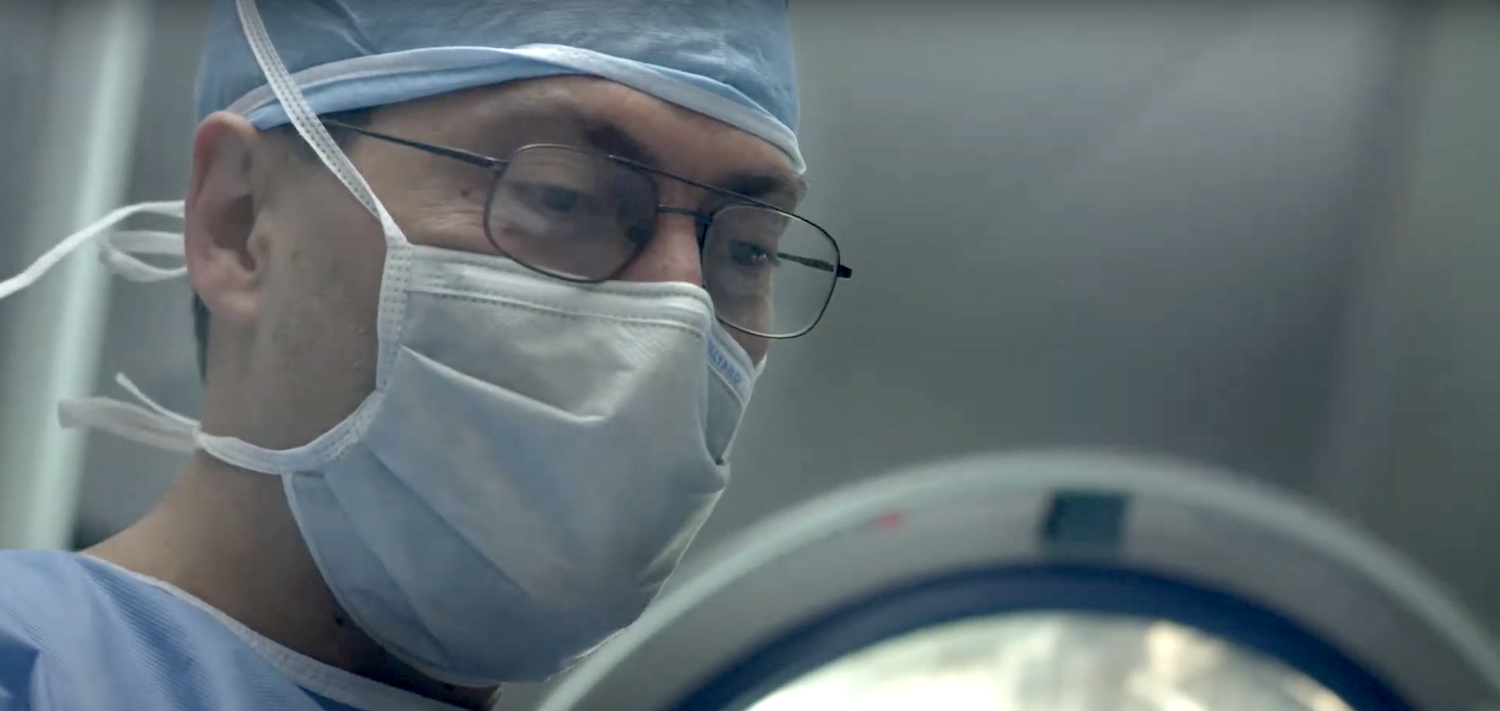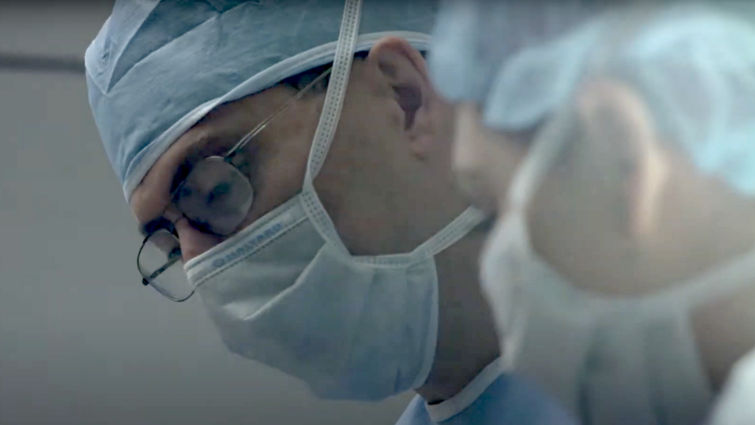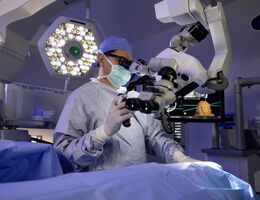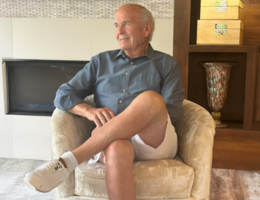

Daniel DiLorenzo, MD, PhD, MBA, is the leading expert of the technology surrounding closed-loop neuromodulation
Imagine a technology that eased the symptoms of Parkinson’s disease. With closed-loop neuromodulation, that is a possibility.
Parkinson’s disease, a chronic and progressive neurological disorder that affects movement, coordination, and balance, significantly impacts a person’s quality of life. Symptoms of Parkinson's develop and gradually worsen over time and often include:
-
Tremor: Shaking, often in the hands or fingers
-
Bradykinesia: Slowness of movement
-
Muscle rigidity: Stiffness in the limbs and trunk
-
Postural instability: Impaired balance and coordination
-
Facial masking: Reduced facial expressions
-
Shuffling gait: Small steps and a stooped posture when walking
While there are ways to treat the symptoms of Parkinson's disease, such as medications, therapies, and surgeries, including deep brain stimulation, closed-loop neuromodulation is a powerful technology that senses brain activity and adjusts stimulation in real-time for better symptom control.
Daniel DiLorenzo, MD, PhD, MBA, FAANS, a neurosurgeon and engineer with specialization in functional neurosurgery, received numerous groundbreaking patents that have transformed closed-loop applications for movement disorders such as Parkinson’s disease, essential tremor, and epilepsy. His expansive and precise innovations lay the foundation for a future in which neurostimulation is no longer one-size-fits-all but instead smart, responsive, and genuinely therapeutic.
“True closed-loop neurostimulation dynamically adjusts based on the body’s current state, aiming to optimize therapeutic effects while minimizing side effects,” DiLorenzo explains. “Whether it’s calming tremors in Parkinson’s disease, reducing seizures in epilepsy, or addressing psychiatric conditions, this approach represents a paradigm shift in how we interface with the brain.”
What is closed-loop neuromodulation?
Closed-loop neuromodulation is a smart, responsive form of neurostimulation in which the system continuously monitors signals from the nervous system and automatically adjusts its stimulation in real-time based on what it detects.
The primary goal is to track tremor activity and dynamically increase stimulation when tremors intensify. This allows for a more personalized and responsive treatment, potentially leading to better symptom control in movement disorders like Parkinson’s disease.
Another important benefit is the potential to minimize side effects by only delivering as much stimulation as necessary.
Key features include:
-
Real-time sensing: The ability to fine-tune stimulation based on real-time signals, enhance symptom relief, and reduce battery consumption by avoiding overstimulation.
-
Intelligent response: The technology uses algorithms to interpret signals and decide how to adjust stimulation.
-
Dynamic adaptation: It delivers stimulation in a personalized, context-sensitive way to better control symptoms and reduce side effects.
Because neurological symptoms fluctuate, patients who rely on medication often develop side effects, eventually requiring more frequent doses, sometimes as often as every two hours in severe cases, DiLorenzo says. For patients relying on medication, too little can result in tremors, while too much can cause dystonia –– a common side effect of prolonged medication use.
Over time, these side effects progress, often becoming worse than the initial tremors, which is why it is helpful for the patient to be evaluated by a movement disorders specialist earlier in their process.
Closed-loop neuromodulation compensates for these fluctuations by detecting changes and adjusting accordingly.
Closed-loop vs. open-loop neuromodulation
Closed-loop systems work like a thermostat: they listen to the body, determine whether more or less stimulation is needed, and make real-time adjustments to maintain optimal outcomes. In contrast, open-loop systems deliver a fixed pattern of electrical stimulation regardless of what’s happening in the body.
“To put it simply, open-loop control delivers stimulation in a steady, unchanging way. It doesn’t respond to the patient’s condition or symptoms — like a metronome ticking along regardless of what’s happening in the body,” DiLorenzo explains. “Closed-loop systems take input from the body and use that data to adjust the stimulation output in real-time.”

The process of closed-loop neuromodulation
Patients with Parkinson’s disease are first evaluated and managed by a neurologist. DiLorenzo says that they begin treatment with medications, which generally work well for a number of years.
“Over time, the effectiveness of these medications may decline, and patients may begin to experience significant side effects,” DiLorenzo says. “At that point, the neurologist will assess whether the patient might be a good candidate for surgical intervention.”
Before surgery, patients undergo neuropsychological testing to ensure they are stable enough to handle the procedure and recovery. This is standard for everyone and helps to identify any potential concerns early. The procedure is then completed in two steps: electrode placement and pulse generator implantation.
Step 1: Electrode placement
This first step involves placing one or two electrodes into targeted areas of the brain. The surgeon makes a small incision in the scalp and drills dime-sized holes in the skull to insert the electrodes, which are carefully guided to precise targets within the brain. Once the electrodes are placed, the wires are tunneled under the scalp, typically toward the non-dominant side of the body.
This part of the surgery is most often performed while the patient is awake but lightly sedated to allow for real-time testing of the stimulation to confirm correct placement. Patients usually stay in the hospital overnight for monitoring, and many go home the next day.
Step 2: Implanting the pulse generator
During an outpatient procedure two to four weeks later, the surgeon places a small pulse generator, similar to a pacemaker, just under the skin beneath the clavicle. Through a small incision, the wires are tunneled from the head down the side of the neck to the generator. Everything is secured, carefully positioned, cleaned with antibiotic solution, and closed in layers.
The pulse generator battery typically lasts about five years and can be replaced through a quick outpatient procedure.
Closed-loop neuromodulation can be a life-changing procedure not only for those with Parkinson’s disease but also for individuals with essential tremor and epilepsy. Loma Linda University Health – Surgery Rancho Mirage Clinic is among the nation's leading centers advancing this groundbreaking therapy.
If you or a loved one could benefit from neuromodulation, call 760-346-8058 today to explore the possibilities for a better quality of life.



